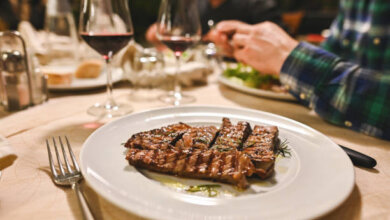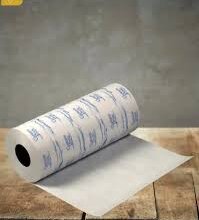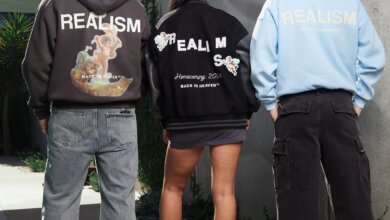
Pakistani formal women dresses represent traditions and customs of Pakistan. The dresses are employed on various occasions such as weddings, family gatherings, and festivals. Every design has a meaning and is normally achieved with fine craftsmanship. This article depicts the varieties, material, and usage of formal dresses Pakistani for women.
The Role of Pakistani Formal Dresses in Pakistani Culture
Pakistani formal gowns form part of customs in Pakistan. They are employed during occasions that hold prominence in family or communal life. Individuals select these garments to complement the kind of event and the time it occurs.
History of Formal Clothing
Previously, Pakistani formal wear was worn by individuals belonging to royal families and special groups. Attire such as the Peshwas, Gharara, and Angrakha was fashionable. The attire had intricate handwork and was manufactured using materials like silk and jamawar.
Traditional Event Dresses
Formal clothing is worn on Eid days, wedding days, and other family events. Formal gowns are not just for the looks. They also demonstrate respect for the occasion and visitors who are coming. The color, the embroidery, and the design are all significant.
There are various fashions based on the region in Pakistan, but the intention is always the same, expressing concern and careful attention through clothing.
Formal Women Dresses in Pakistan
There are several dresses which are formally worn by Pakistani women. The style depends upon the event, the age of the individual, or one’s choice. There is some specific value for every type of dress in Pakistani dressing.
Long Shirts with Pants
Long shirts are commonly used with pants or trousers. This is an easy yet classy dress option. The dresses may be embroidered or stoned. They may be worn to formal dinners or as a guest for a visit.
Anarkali and Peshwas
Anarkali and Peshwas dresses are used in various occasions. These dresses are long and free. They are tight at sleeves and wide at the bottom. These kinds of dresses are picked for official events where there is a need for a soft and classy appearance.
Lehenga with Blouse
The lehenga and blouse is the most popular at weddings. The dress consists of a full skirt and a short top. The dress can also have a long scarf named dupatta. This clothing is among the most used wedding formal dresses for events due to its vibrant appearance.
Gharara and Sharara
Gharara is a wide-legged pant matched at the knee. Sharara is another dress resembling it but is more smooth opening. These dresses are made from mirror work, lace, or hand embroidery. These dresses are worn by most women for wedding days such as mehndi and sangeet.
Formal Dresses’ Most Popular Fabrics and Ornaments
Formal dresses utilize special fabrics. The material and adornment are based on the nature of the occasion, season, and time of day.
Types of Material
Many types of fabrics are utilized in Pakistani formal wear. The most common ones are:
Silk: applied to sleek and lustrous dresses
Velvet: applied to a rich and deep appearance
Organza: light and transparent fabric, usually worn as scarves
Chiffon: soft and lightweight, ideal for layering
These clothes are colored in a manner that suits the occasion. Daytime events use bright colors. Evening functions use dark colors.
Embroidery and Decorations
Formal gowns are characterized by handwork. Formal gowns usually feature:
Zari: gold or silver string
Dabka: coarse thread work
Tilla: plain metal thread work
Gota: ribbon inserted into the fabric
Mirror work: tiny pieces of glass embroidered into the fabric
Each style of work gives a varying effect to the dress. They are applied manually and may take days or even weeks to finish.
Selecting the Ideal Formal Gown for Events
A dress will depend on what type of event you are attending. The dress should be of appropriate time, place, and type of guests.
Daytime vs. Evening
If something occurs during the day, women wear pale colors and light materials. Light green, white, and light pink are common. Night functions witness greater use of colors like navy, black, and maroon. Night dresses contain more glitter, stones, or heavy stitching.
Dress Styles by Age
Younger females tend to opt for new trends. These can include capes or cut styles that are new. Older females prefer traditional styles that are more covered. These two groups love dressing up in formal wear according to their personality.
Formal Wear for Weddings
Pakistan wedding activity involves a number of days including the mehndi, baraat, and walima. Each activity has its own dress culture. For instance:
Mehndi: light dresses with yellow or green shades
Baraat: red or gold dresses with intricate work
Walima: soft colors and light designs
These occasions demand different attire. Guests also select dresses according to the occasion but not very flashy.
Pakistani Formal Wear Trends Today
Today, Pakistani formal wear combines new and old fashions. Most individuals dress in conventional outfits with new cuts or stitching changes.
New Shapes and Cuts
Most women dress in long jackets, capes, or straight shirts with pants. Some dresses employ Western shapes but retain Pakistani embroidery. This provides a dress with old and new appeal.
Carefully Made Dresses
Individuals now worry about where and how dresses are produced. Some dresses are produced with natural colors and local fabric. Numerous women also recycle family dresses or redesign older garments with fresh work. It is better for the planet and retains family memories.
Media and Fashion
What women view on television and the big screen can make them change their outfits. Most dresses modeled in television programs or by celebrities become popular at functions. This does keep traditional fashion current and popular with younger generations.
Conclusion
Pakistani formal women’s dresses are a part of culture and day-to-day life. Dresses are utilized on all types of occasions, ranging from family dinners to weddings. Every dress is selected with discretion, depending on the fabric, cut, and design.
Women nowadays have numerous dresses to choose from, such as lehengas, ghararas, or pants and long shirts. The difference between each dress is the material used and the effort invested.Some of the dresses are ancient in design, whereas others blend ancient and new in innovative ways. Whether you’re searching for formal Pakistani dresses or need to decide on outfits for festive occasions, the possibilities are rich with beauty, color, and symbolism. These dresses still express pride in culture, family, and oneself.
Read More: theglobalnewz





